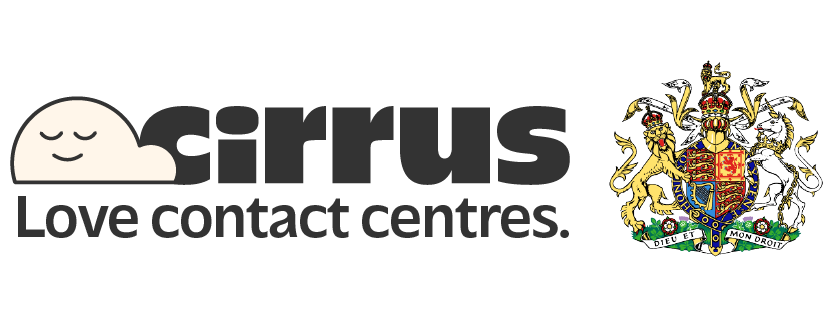University is supposed to be a time of growth, discovery, maybe even joy. But for thousands of students today it isn’t.
Costs are rising. Support is slow, and teams are working in silos. Systems don’t talk to each other. Throw in academic pressure, part-time jobs, housing uncertainty, isolation, and industrial action, and it’s no wonder students are struggling to cope.
A YouGov poll found that half of all undergraduates and graduates worry about their mental health. Only 60% think their degree offers good value. That mismatch between promise and experience can lead students to question whether it’s all worth it.
They’re not waiting for things to improve. Students are turning to AI to study, plan, and solve problems—because it gives them quick answers and straightforward help. And when they get used to that standard elsewhere, they expect it from their university too.
As Jason Roos, CEO of Cirrus, puts it:
“Students expect 24/7 help—just like they get from their favourite retail brands. If they can track a £10 delivery in real time, why can’t they get a straight answer about a wellbeing referral? AI opens the door to better support—but only if the tech behind it works together. It’s not the technology holding universities back—it’s how it’s being used.”
Here’s what the student journey really looks like—and what university teams can do to support them properly, from day one to graduation.
Clearing: the first contact
Clearing is intense. Last-minute calls, overwhelmed staff, anxious students trying to make the right decision fast.
They need quick, clear answers about course places, next steps, accommodation timelines. And they need to feel confident that what they’re told will be the same whether they call, email, or use live chat. The universities getting this right already have omni-channel contact centres in place—with consistent routing logic, a shared knowledge base, and a joined-up follow-up process—so queries move quickly, nothing gets missed, and the experience feels considered from the start.
Because when a student has to repeat their story to multiple people, or gets different answers from different channels, they stop trusting the system. And once that expectation sets in, it colours every interaction that follows.
Freshers: the noisy, disorienting start
Freshers’ Week is often framed as exciting. But it’s also disorienting. New city. No structure. No one clear place to go with questions.
For international students, that confusion is amplified—language barriers, cultural norms, different expectations. For disabled students, poor accessibility can make basic systems hard to use.
This is the moment when simple, consistent, accessible support matters most. When a student asks about their registration, their ID card, their health form—it should be picked up straight away, routed to the right person, and recorded for continuity. With multilingual support tools and WCAG-compliant systems in place, no student is blocked from help by the design of the service itself.
Housing: small issues that escalate fast
A broken heater. No one to collect the key. Confusion over the tenancy agreement. These things might sound minor—but for students living away from home for the first time, they can feel like major obstacles.
When housing, student services, and finance teams work within the same platform—supported by CRM integration—they can access shared notes, past interactions, and unresolved queries all in one place. So students don’t have to repeat themselves. And teams can see if a problem is new—or part of a pattern.
If three students report the same heater fault in a week, or the same key goes missing again, someone should flag it. And think—hang on. Maybe something’s off here.
Finance: the thing no one wants to talk about
Money problems are personal. And they often create a kind of quiet anxiety—a sense of uncertainty that many students don’t voice until it’s already affecting their studies, their health, or their attendance.
And by then, it’s usually complicated: overdue payments, unclear loan status, multiple calls or emails without resolution.
According to Save the Student’s 2024 Money Survey:
- 58% of students say financial stress affects their mental health
- 48% have thought about dropping out of university because of money worries
When your finance, housing, and student support teams use one integrated system, they can respond faster—and with context. Previous enquiries, follow-ups, and shared notes are right there. So when a student asks about rent deadlines or emergency funds, they get a clear, informed answer without being bounced between departments.
Mid-year exams: where wellbeing is tested
By January, the workload has doubled. Assignments. Feedback delays. Silent tutors. Missed wellbeing checks.
Many students feel alone. But they’re not unreachable.
This is where proactive support makes a difference. Scheduled wellbeing messages. Automated prompts. Clear handover notes between academic and support teams. So when a student does speak up, they’re not starting from scratch.
A national review into student suicides in higher education found that first-year and international students were most at risk, and that many had previously contacted support, but the right help didn’t come in time.
Final year: the most pressure, the least patience
Final year brings a different kind of stress. Deadlines, job interviews, decisions about what comes next.
And support gaps hit harder here—because students are running out of time. And maybe patience too. A missed reference. Confusing career advice. Chasing the same answer three times. It chips away at confidence.
This is where workforce planning tools can help universities get ahead. By aligning staffing to known pressure points—like results day, final submissions, and careers deadlines—students are more likely to get timely answers when they’re already under strain.
With contact trends, case tracking, and team performance data in view, universities can spot what’s changing—and act before things unravel.
Graduation: what stays with them
By graduation, the experience is more or less set. The good bits stay with students. But they also remember where things were missed—when help took too long, or didn’t come at all.
Missed emails. Lost tickets. Unresolved issues. These are the moments students remember—and talk about—after they leave. They shape how alumni describe your institution. They shape who recommends you. And who doesn’t.
What’s next for universities?
You don’t need more systems—you need systems that talk to each other and give your teams the full picture when it matters. And the ability for staff to act with full context, not just good intentions.
When contact centres, housing, finance, wellbeing and academic support share systems and visibility, support stops being reactive. It starts being responsive and proactive.
That’s what helps them stay. Succeed. And leave with something they believe in.
See how Cirrus helps universities respond faster—and support better.






